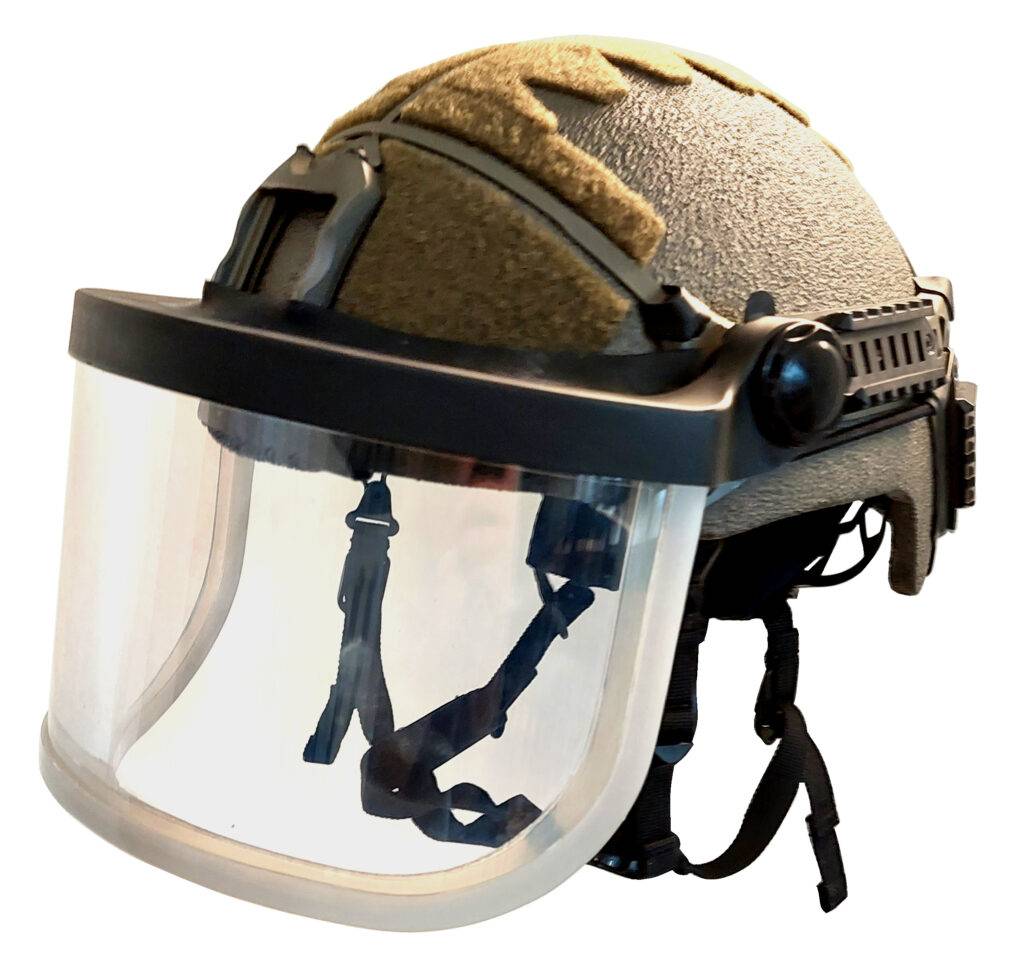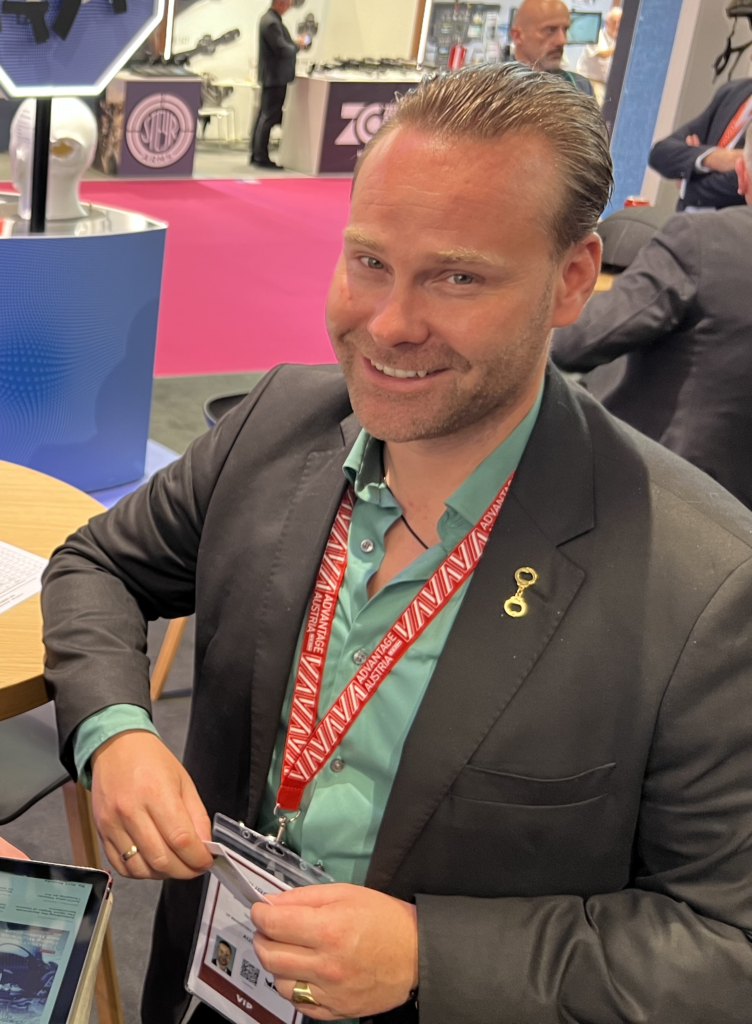Austrian Ulbrichts is regarded as the world’s premier manufacturer of ballistic titanium helmets. It is widely used by police and special forces around the world.
Ulbrichts Protection, a division of the Ulbrichts Group based in Schwanenstadt, produces ballistic titanium helmets and hybrids made of titanium aramid or polytanium. Its helmets protect various special and police units globally. Pioneering in ballistic head protection, Ulbrichts consistently sets new technical standards in protection, comfort, and design.

Ulbrichts was founded in 1796 in Lüdenscheid, Germany, originally producing military knobs and buttons. In 1934, the headquarters moved to Kaufing, Austria. In 2000, DI Georg Scharpenack, the CEO and current owner, acquired the company and initiated a comprehensive reconstruction. In 2015, Ulbrichts Tec in Budweis was established for automotive production. Today, Ulbrichts GmbH has two technologically advanced business divisions: automotive and protection. The automotive division is the market leader in Europe for car emblems and logos. In protection, Ulbrichts is a pioneering developer and producer of ballistic helmets.
For Police and Special Forces
The history of Ulbrichts helmets is extensive. In 1991, a milestone was achieved with the further development of the former Ulbrichts US M1 military helmet, transitioning to the titanium model AM 91 in collaboration with GSG 9 for Special Forces.
Ulbrichts is considered to provide the world’s best head protection against handgun and rifle bullets. 80 percent of German police units use their helmets, along with many other European tactical police and military special forces.
Boltless Design
Ulbrichts has developed a unique procedure to combine polyethylene and titanium for their polytanium helmets. “The Optio and Zenturio helmets represent the new generation of ballistic protection with the best performance on the market, especially in true rifle protection,” stated Thomas Poandl, the vice president of Ulbrichts GmbH (marketing & communications).
While other helmets face issues with trauma or secondary fragments or shrapnel when bolts are struck, the Ulbrichts Optio, Optio+, and Zenturio mitigate this with their boltless design. This design eliminates the risk of secondary shrapnel. “Without ballistic gaps, the screwless design provides an increased protection area by 20-30 percent,” Poandl added.
Using Titanium Hybrids

“Ulbrichts uses polytanium, a titanium hybrid, to reduce weight while maintaining the protection level,” Poandl explained. “Combining two materials is crucial to integrate the best of both worlds with a primary focus on saving lives.”
The company emphasizes survivability with uncompromising protection and design. The NIJ IIIA standard defines a protective area starting 50mm (1.9685 inches) from the edge of the helmet and each screw in the helmet shell. “For Ulbrichts, this protection area is insufficient, which is why we have certified the OPTIO according to VPAM3 HVN2009,” Poandl stated.
The boltless OPTIO, starting at 1.25 kg as HIGH CUT / JUMP, significantly exceeds the NIJ IIIA standard. The protective area begins at 20+5 mm compared to NIJ IIIA helmets, stopping ballistic threats from small arms according to VPAM3 or NIJ IIIA and protecting according to VPAM3 HVN2009 at 50mm from the edge with trauma values <25 joules.
The boltless OPTIO+, starting at 1.5 kg as HIGH CUT / JUMP, far exceeds the NIJ IIIA and VPAM3 HVN2009 standards. The protective area begins at 15 mm compared to NIJ IIIA helmets, stopping ballistic threats from small arms according to VPAM3 or NIJ IIIA and protecting beyond VPAM3 HVN2009 also at 15mm from the edge with trauma values <25 joules.
Protection Against Kalashnikov
Ulbrichts already offers the Fortis forehead shield as a solution for rifle threats when needed. The Fortis front shield from Ulbrichts Protection is an additional module that upgrades the OPTIO and OPTIO+ to TRUE rifle protection, corresponding to protection type VPAM 6 (VPAM 6 = Kalashnikov 7.62×39 MSC / iron core) with survivable trauma values similar to the European directive VPAM HVN2009 (residual energy values < 25 joules).
The front shield weighs only 490g and can reliably reduce the enormous firepower of a Kalashnikov assault rifle, with over 2000 joules and a projectile velocity of around 720 m/s (2362 f/s), to well below 25 joules, while also stopping the NATO calibre 7.62x52mm (.308 / M80 / NIJ III).
Due to the significant firepower and high threat posed by the Kalashnikov and other rifles, police forces have often lacked real head protection against rifles. This is a shift to counter the threat.
“At present, we are at Level VPAM6 and NIJ III. Our R&D department is continually evaluating and developing further products to enhance ballistic protection levels,” Poandl explained. “More protection always means more weight to be carried,” he reminded. “When it comes to head protection, weight is always a crucial factor. Our development runs parallel to raw material development.”
Poandl concluded with another key feature for Ulbrichts: “Our new, one-size-fits-all approach allows for easy procurement. Regardless of size, our helmet will fit every head.”



